
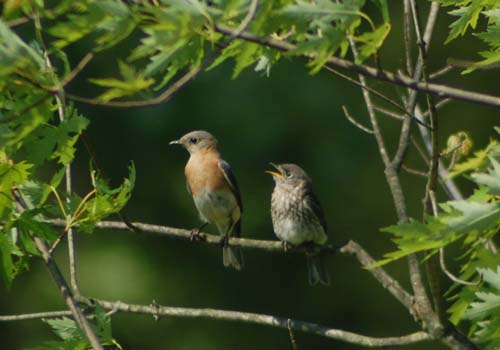
Richard and Diane Van Vleck Personal Pages The Home Habitat |
 |
 |
Eastern bluebirds readily take to our nestboxes, and have generally thrived here, although they have had some bad years. Their first brood is sometimes affected by cold, wet weather, and 2nd broods sometimes suffer from very hot, dry weather. Modifications of nestbox construction have minimized both of these problems. On rare occasions, supplemental food is provided during severe weather. Predation has been minimal. Competition from tree swallows has been easily managed with proper nestbox placement. However, house wrens had posed major problems, until we stumbled upon the "wren gourd" fix.
Feb. 2011 update - Eastern bluebirds have become the most abundant bird species in our yard in winter, with family units of 5 or 6 frequently visiting nest boxes, although seldom, if ever using the boxes for night roosts. They prefer to roost in the protection of the dense cedar grove. The nesting season is even busier, with two and sometimes three pair nesting in our yard. In 2010, both the front and backyard bluebirds each had three broods. The front yard pair moved to a new box each time, using 2 boxes previously used by tree swallows. The backyard pair had all three broods in their favorite box. This is the pair that successfully fend off the house wren that has twice destroyed the nearby titmouse nest. Their nesting never fails and they seem to rule the backyard and garden, even with the kestrels nesting 30 feet away this year. While nesting, they seldom leave the garden and maple tree, spending most of their time perched on one of the many tomato cages.
 |
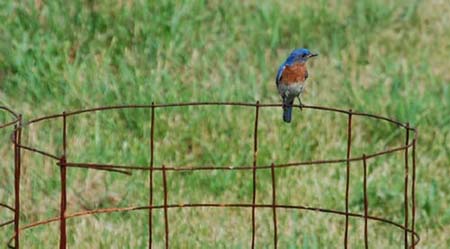 |
| A temporary chicken wire fence is placed around active bluebird nests in our yard to keep out our cats. While they can jump higher, they won't jump over anything, as opposed to jumping up onto something. | Bluebirds and many other species frequently hunt from the tomato cages in our garden. This benefits both the birds and the tomatoes. |
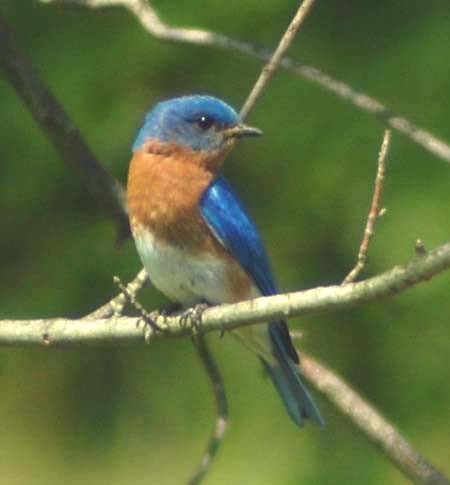 |
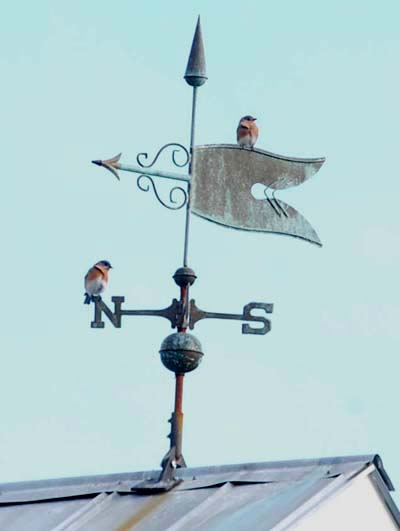 |
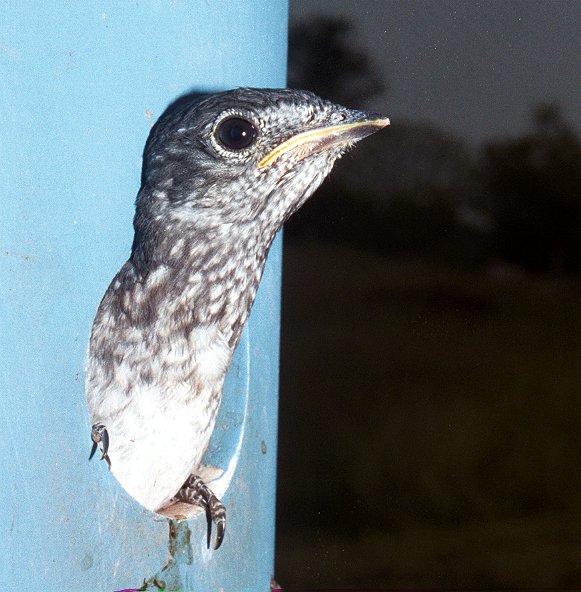 |
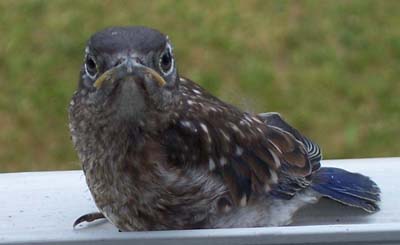 |
| Jan 7, 2015 update - The male bluebird below successfully reared a single bluebird from a very late hatching egg. I had periodically checked the nest box containing 5 bluebird eggs. The female stayed in the box during nest checks, but later she was never present when I would check the box. When I became aware that the incubation time was excessive, I assumed the eggs weren't fertile and the adults had moved on. But, when I happened to check the box again, the first egg had hatched. I set up a blind near the nest and soon realized that the male was bringing prey to the box infrequently and there was no female present. Had the male incubated well enough and often enough that the one egg hatched? The lone nestling did fine and the rather secretive male succeeded at both fooling me and salvaging something from what would likely have been a total failure. | |
 |
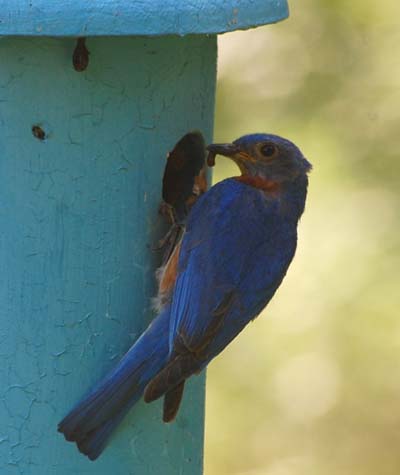 |
| 2015 update - This year, with a replacement female, two broods were fledged from the front yard box. A blind was set up on what turned out to be fledge day to photograph the types of prey being offered - everything from earthworms to moths with a large number of spiders. Whatever happened to our insects in 2014, they seem to be returning this year. | 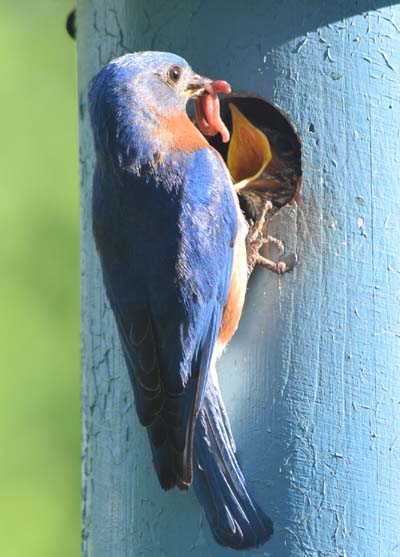
|
 |
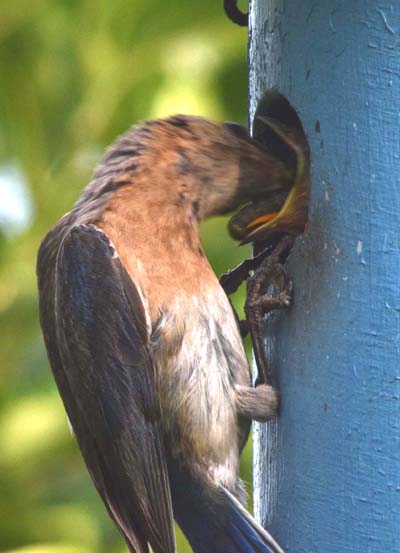
|
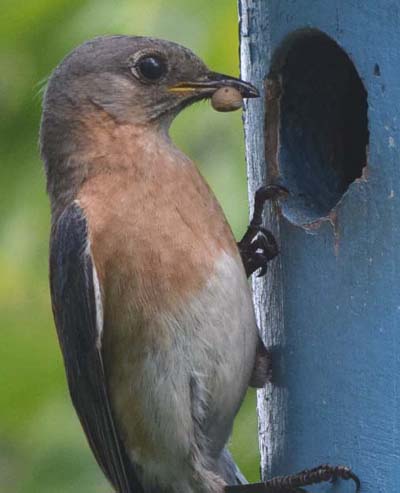 |
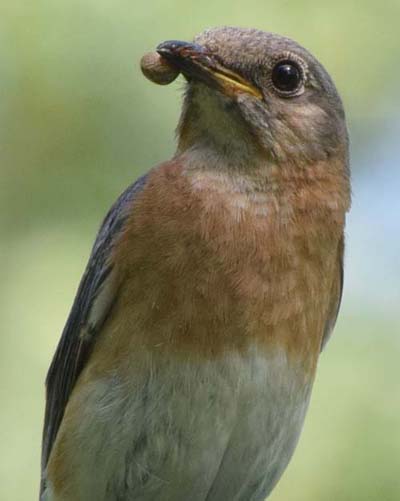
|
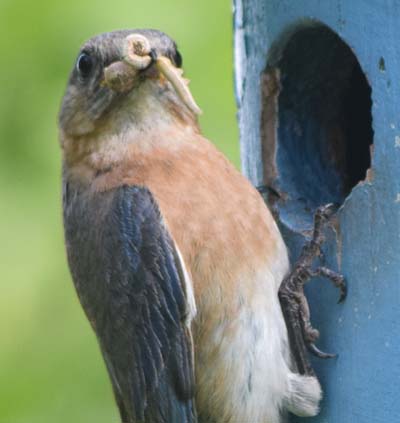 |
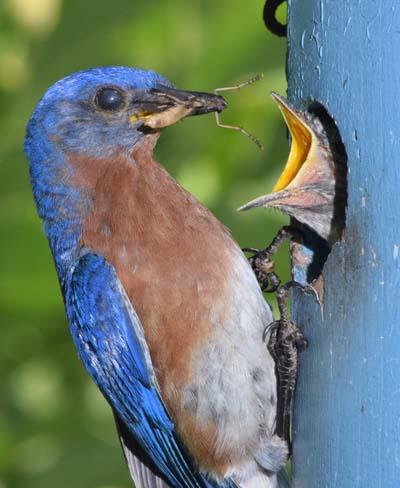
|
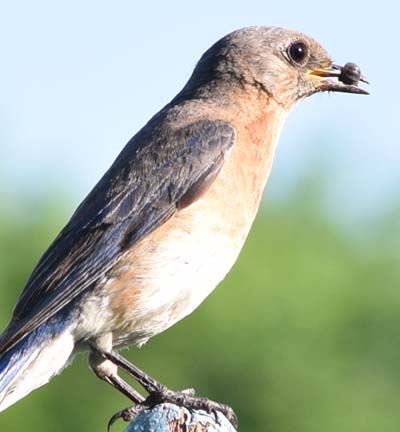 |
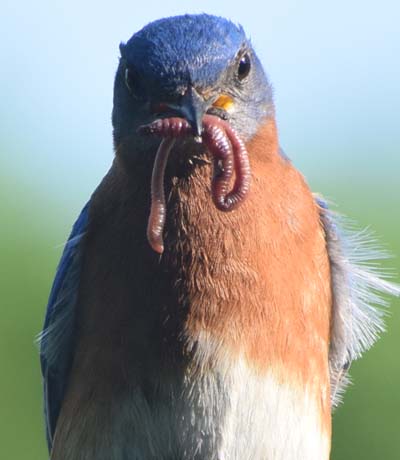
|

|
|
Articles
| barn owl | American kestrel | purple martin | barn swallow | Eastern bluebird |
| tufted titmouse | Eastern phoebe | yellow shafted flicker | tree swallow | chimney swift |
| house wren | big brown bat | Carolina wren | brown thrasher | catbird |
| cedar waxwing | Northern mockingbird | |||
| Yellow warbler | Acadian flycatcher | |||
email richard@americanartifacts.com
© 2001 - 2016, American Artifacts and Richard Van Vleck, Taneytown, Maryland.